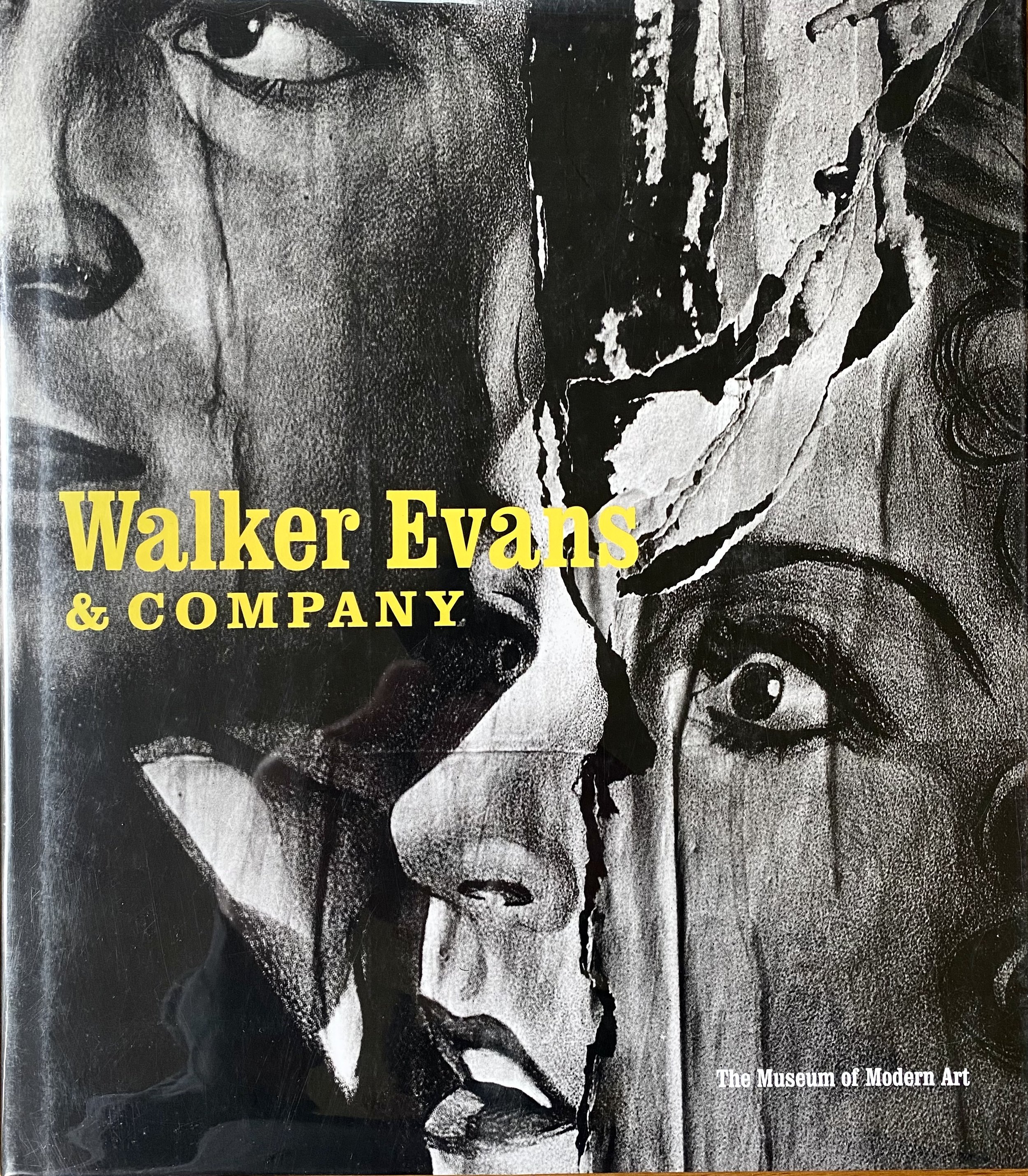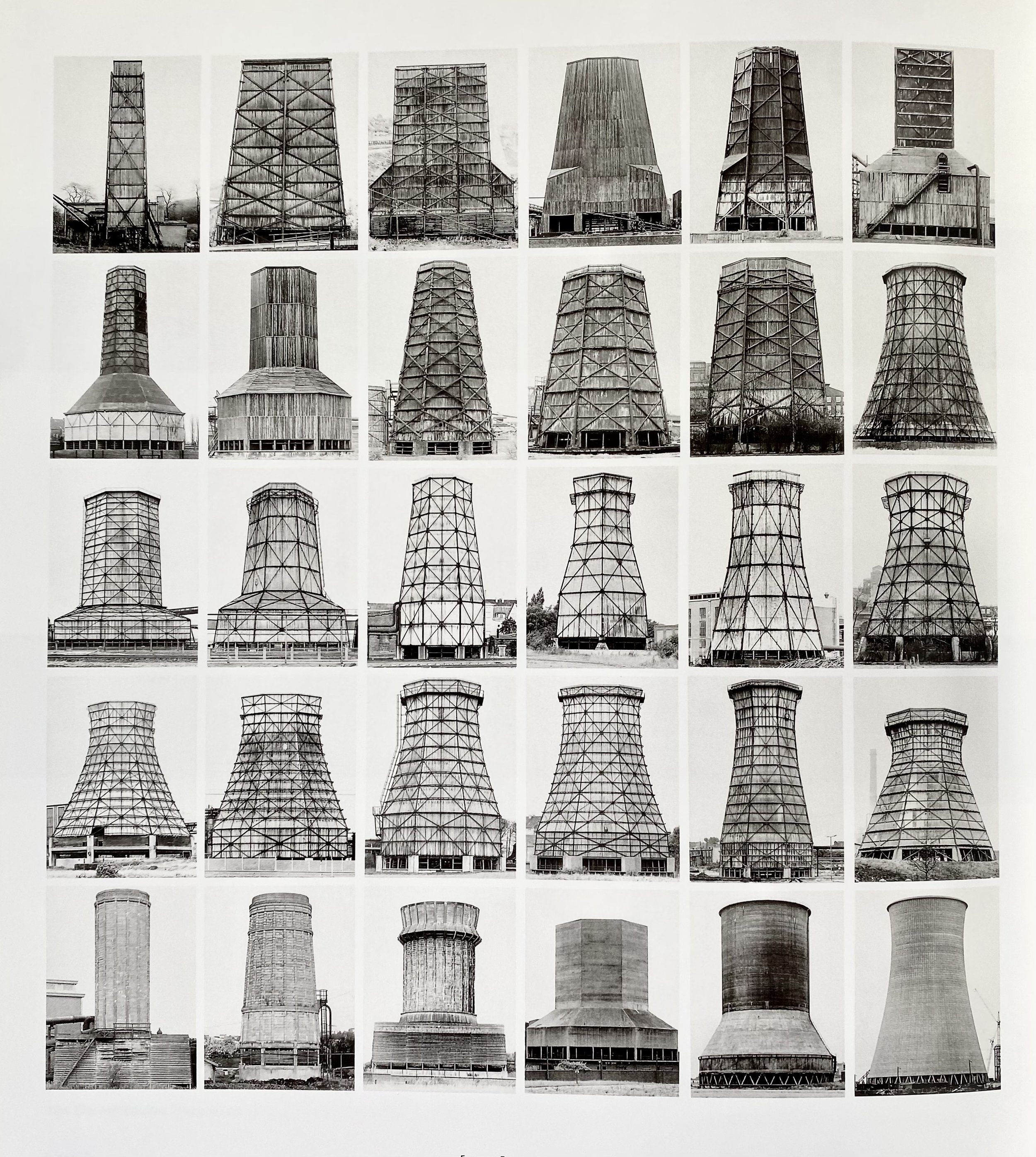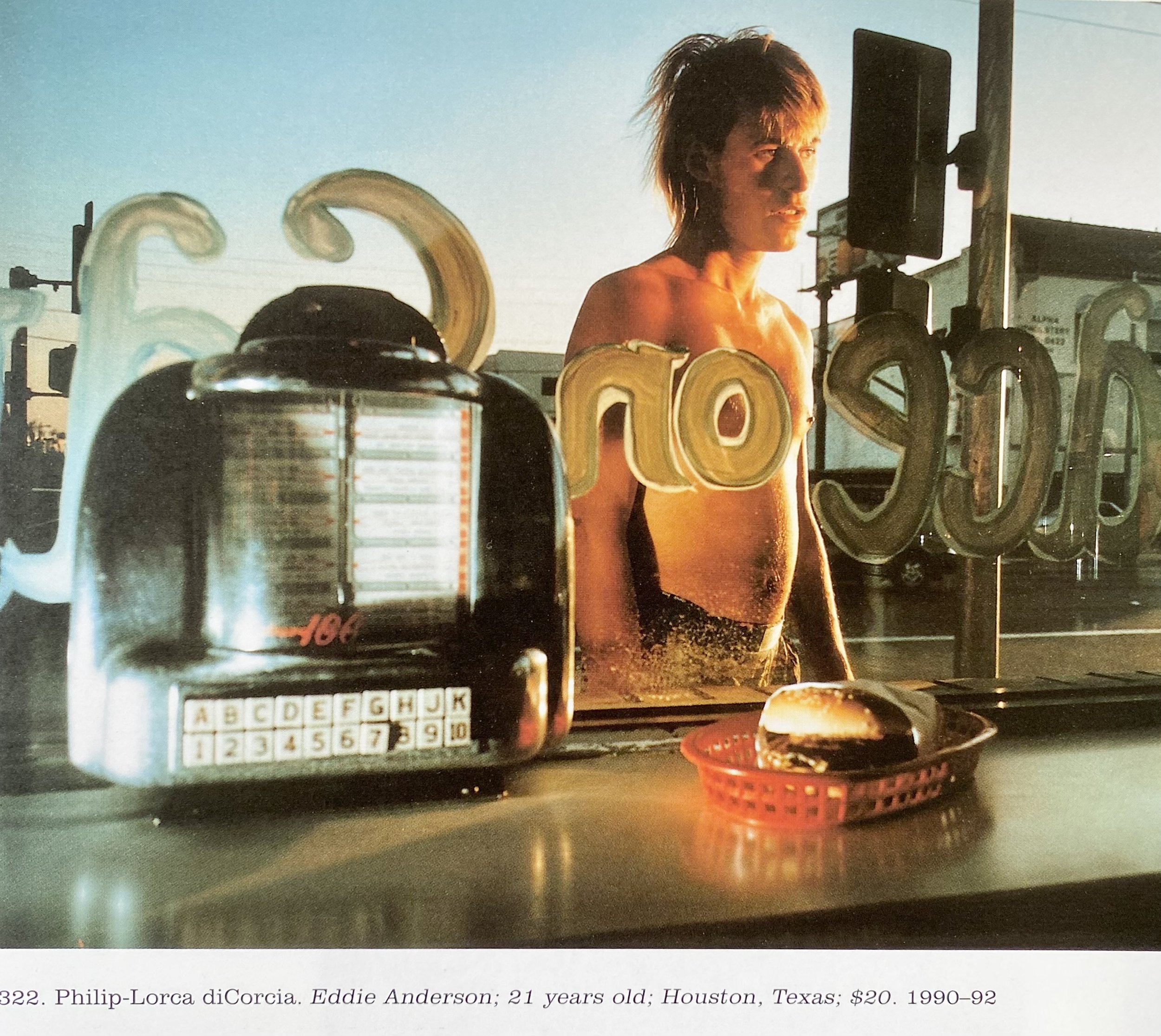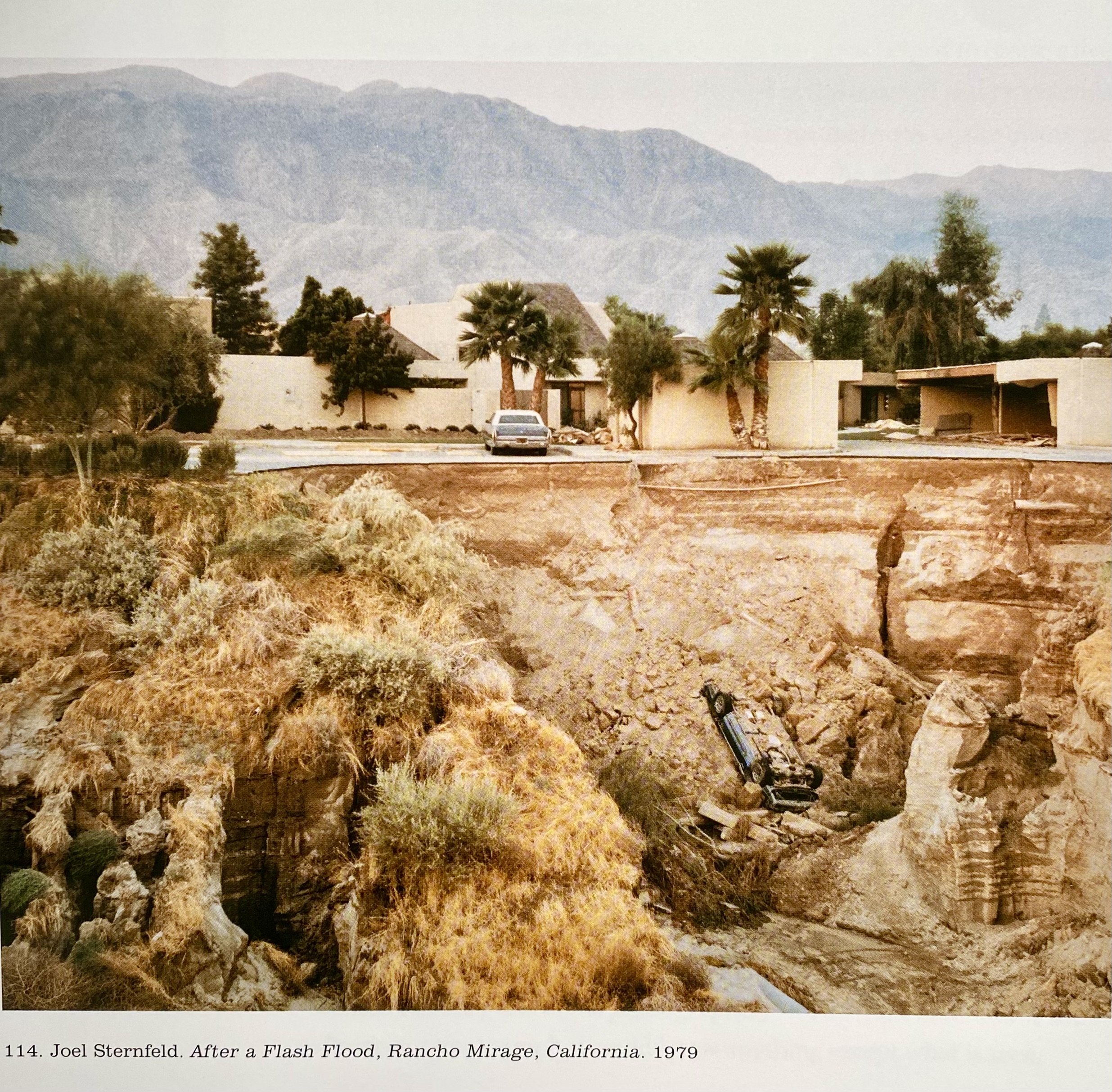 Image 1 of 5
Image 1 of 5

 Image 2 of 5
Image 2 of 5

 Image 3 of 5
Image 3 of 5

 Image 4 of 5
Image 4 of 5

 Image 5 of 5
Image 5 of 5






Walker Evans & Company
By Peter Galassi. Published in conjunction with an exhibition held at The Museum of Modern Art, New York, curated by Galassi. Includes Walker Evans' own photography, as well that of his predecessors, such as Mathew Brady, Eugene Atget, August Sander, et c. Also included are works by the later generations influenced by Evans, such as Stuart Davis, Robert Frank, Lee Friedlander, Roy Lichtenstein, Ed Ruscha, Andy Warhol, Edward Weston, and others. An intriguing approach!
Evans was born to a prosperous St. Louis family in 1903. He studied French literature at Williams College, dropping out after one year. After traveling in France, Evans joined an artsy, literary crowd in New York, including writers John Cheever and Hart Crane. He worked on Wall Street briefly, until the Crash of 1929. He had taken up photography in 1928, and leveraged his newfound skill into an assignment documenting life under the Cuban dictatorship.
During the Great Depression, Evans truly found his métier as a photojournalist. In 1935 he became an "information specialist" with the Resettlement Administration (which would later become the Farm Security Administration), documenting the realities of life in the rural South, and elsewhere around the country. 1936, Fortune sent Evans and the writer James Agee to southern Alabama to do a story on three families of white sharecroppers. The magazine killed the story, so Evans and Agee's published their work in a book, “Let Us Now Praise Famous Men”. The book’s personal, sympathetic, and unflinching examination of rural poverty was influential, even inspiring composer Aaron Copland’s opera, “The Tender Land”.
In 1938 the Museum of Modern Art in New York held an exhibition called “Walker Evans: American Photographs” — its first ever devoted to single photographer. Evans would also become a staff writer at Time magazine, and then, ironically, an editor at Fortune. In 1965 Evans was appointed professor of photography at the Yale University School of Art, where he experimented with the new medium of Polaroid photography, among other things. He died in 1975.
Published by Museum of Modern Art, New York, 2000. Hardcover, quarto. 272 pages, 399 illustrations (67 color & 332 duotones). Fine in Fine mylar-protected jacket.
By Peter Galassi. Published in conjunction with an exhibition held at The Museum of Modern Art, New York, curated by Galassi. Includes Walker Evans' own photography, as well that of his predecessors, such as Mathew Brady, Eugene Atget, August Sander, et c. Also included are works by the later generations influenced by Evans, such as Stuart Davis, Robert Frank, Lee Friedlander, Roy Lichtenstein, Ed Ruscha, Andy Warhol, Edward Weston, and others. An intriguing approach!
Evans was born to a prosperous St. Louis family in 1903. He studied French literature at Williams College, dropping out after one year. After traveling in France, Evans joined an artsy, literary crowd in New York, including writers John Cheever and Hart Crane. He worked on Wall Street briefly, until the Crash of 1929. He had taken up photography in 1928, and leveraged his newfound skill into an assignment documenting life under the Cuban dictatorship.
During the Great Depression, Evans truly found his métier as a photojournalist. In 1935 he became an "information specialist" with the Resettlement Administration (which would later become the Farm Security Administration), documenting the realities of life in the rural South, and elsewhere around the country. 1936, Fortune sent Evans and the writer James Agee to southern Alabama to do a story on three families of white sharecroppers. The magazine killed the story, so Evans and Agee's published their work in a book, “Let Us Now Praise Famous Men”. The book’s personal, sympathetic, and unflinching examination of rural poverty was influential, even inspiring composer Aaron Copland’s opera, “The Tender Land”.
In 1938 the Museum of Modern Art in New York held an exhibition called “Walker Evans: American Photographs” — its first ever devoted to single photographer. Evans would also become a staff writer at Time magazine, and then, ironically, an editor at Fortune. In 1965 Evans was appointed professor of photography at the Yale University School of Art, where he experimented with the new medium of Polaroid photography, among other things. He died in 1975.
Published by Museum of Modern Art, New York, 2000. Hardcover, quarto. 272 pages, 399 illustrations (67 color & 332 duotones). Fine in Fine mylar-protected jacket.
By Peter Galassi. Published in conjunction with an exhibition held at The Museum of Modern Art, New York, curated by Galassi. Includes Walker Evans' own photography, as well that of his predecessors, such as Mathew Brady, Eugene Atget, August Sander, et c. Also included are works by the later generations influenced by Evans, such as Stuart Davis, Robert Frank, Lee Friedlander, Roy Lichtenstein, Ed Ruscha, Andy Warhol, Edward Weston, and others. An intriguing approach!
Evans was born to a prosperous St. Louis family in 1903. He studied French literature at Williams College, dropping out after one year. After traveling in France, Evans joined an artsy, literary crowd in New York, including writers John Cheever and Hart Crane. He worked on Wall Street briefly, until the Crash of 1929. He had taken up photography in 1928, and leveraged his newfound skill into an assignment documenting life under the Cuban dictatorship.
During the Great Depression, Evans truly found his métier as a photojournalist. In 1935 he became an "information specialist" with the Resettlement Administration (which would later become the Farm Security Administration), documenting the realities of life in the rural South, and elsewhere around the country. 1936, Fortune sent Evans and the writer James Agee to southern Alabama to do a story on three families of white sharecroppers. The magazine killed the story, so Evans and Agee's published their work in a book, “Let Us Now Praise Famous Men”. The book’s personal, sympathetic, and unflinching examination of rural poverty was influential, even inspiring composer Aaron Copland’s opera, “The Tender Land”.
In 1938 the Museum of Modern Art in New York held an exhibition called “Walker Evans: American Photographs” — its first ever devoted to single photographer. Evans would also become a staff writer at Time magazine, and then, ironically, an editor at Fortune. In 1965 Evans was appointed professor of photography at the Yale University School of Art, where he experimented with the new medium of Polaroid photography, among other things. He died in 1975.
Published by Museum of Modern Art, New York, 2000. Hardcover, quarto. 272 pages, 399 illustrations (67 color & 332 duotones). Fine in Fine mylar-protected jacket.